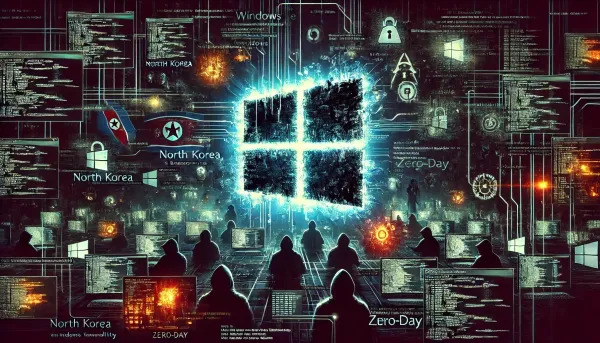
Uncovering Windows Zero-Day: ZDI-CAN-25373 Threats
In the ever-evolving landscape of cybersecurity threats, unpatched vulnerabilities pose one of the most significant risks for organizations worldwide. A recent report has brought to light a critical Windows zero-day vulnerability, tracked as ZDI-CAN-25373, that has been actively exploited by at least 11 state-sponsored threat groups from notable adversaries such as North Korea, Iran, Russia, and China since 2017. The implications of these findings are profound, as threat actors utilize advanced techniques to hide their activities, complicating detection and mitigation efforts.
Overview of ZDI-CAN-25373
Technical Breakdown
The vulnerability resides within how Microsoft Windows handles Shell Link (.LNK) files, which are commonly used to create shortcuts. These files can contain embedded command-line arguments, which attackers manipulate to execute arbitrary code within the victim’s environment. According to the analysis by security researchers at Trend Micro’s Zero Day Initiative (ZDI), the flaw exploits the User Interface Misrepresentation of Critical Information (CWE-451) to conceal malicious command strings through the strategic padding of whitespace characters.
Manipulation Techniques
Threat actors can insert a range of whitespace characters, such as:
- Space (0x20)
- Horizontal Tab (0x09)
- Line Feed (0x0A)
- Vertical Tab (0x0B)
- Form Feed (0x0C)
- Carriage Return (0x0D)
These manipulations ensure that when a user inspects the .LNK file, the hidden malicious arguments remain invisible, significantly increasing the likelihood of an unsuspecting victim executing the harmful payload.
Attack Vectors and Malware Payloads
Telemetry data indicates that the primary attack vectors include social engineering tactics, where users are tricked into visiting malicious web pages or downloading compromised files. Once the .LNK file is executed, payloads can range from credential-stealing malware such as Lumma Stealer, GuLoader, and Remcos RAT, exploiting the vulnerability to enable persistent backdoor access to the victim’s system.
Notably, recent campaigns involving Evil Corp have used this vulnerability to distribute Raspberry Robin, indicating that the flaw is not only a concern for state-sponsored groups but also attracts cybercriminal organizations seeking financial gain.
Global Impact and Target Analysis
The breadth of the exploitation of ZDI-CAN-25373 cannot be understated. Research indicates that the primary targets involve government institutions, financial organizations, military agencies, and think tanks across regions including North America, South America, Europe, East Asia, and Australia. A staggering 70% of the documented attacks are characterized by espionage and data theft, showcasing the strategic maneuvers employed by these threat actors.
Recent Trends and Developments
With the vulnerability being unaddressed by Microsoft, it is critical to consider the wider implications of negligence in security patch management. Notably, Microsoft has classified this threat as “low severity,” and as such, does not plan to issue a security update. This decision has amplified scrutiny on their vulnerability remediation strategies, especially with recent updates indicating pressures from regulatory bodies to adopt more stringent patching protocols.
For instance, the European Union’s Digital Services Act and the Cybersecurity Act advocate for more rigorous cybersecurity measures among software vendors, placing accountability on the shoulders of organizations like Microsoft.
Newly Emerged Mitigations
In response to the threats posed by ZDI-CAN-25373, organizations are encouraged to adopt several security measures:
-
Implementation of Advanced Endpoint Protection: Utilize solutions like Microsoft Defender, which provides real-time protection against known threats and enhances heuristics to detect anomalous behaviors indicative of exploits.
-
Security Awareness Training: Engage regularly in training sessions for employees to recognize suspicious files and phishing attempts that might lead to compromise.
-
Regular Audits and Monitoring: Employ continuous monitoring of network traffic and endpoint behavior for any indication of exploitation attempts related to this vulnerability.
Conclusion
The ongoing exploitation of the ZDI-CAN-25373 zero-day vulnerability by state-sponsored groups serves as a stark reminder of the persistent threats lurking in the cybersecurity landscape. While Microsoft’s inaction raises concerns, it also compels organizations to take proactive measures to safeguard their ecosystems by leveraging advanced detection capabilities, enhancing user training, and advocating for expedited vulnerability patching. As the threat landscape evolves, staying informed and prepared is crucial for minimizing the risks of exploitation and ensuring organizational resilience.
This case underscores the importance of continuous vigilance in cybersecurity practices, maintaining awareness of emerging threats, and advocating for accountability among software vendors to address vulnerabilities before they can be exploited.